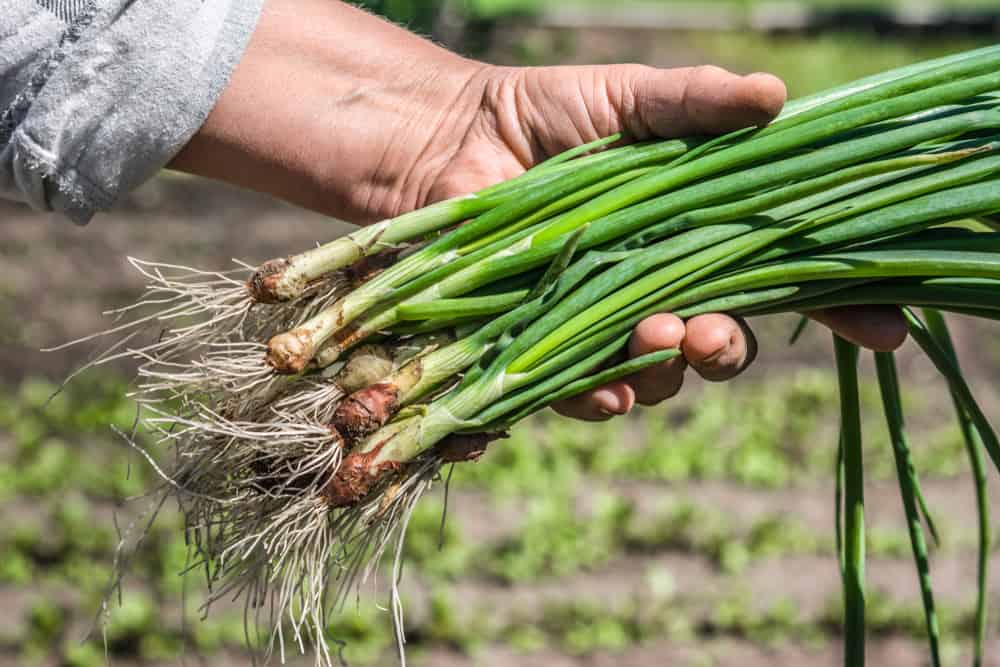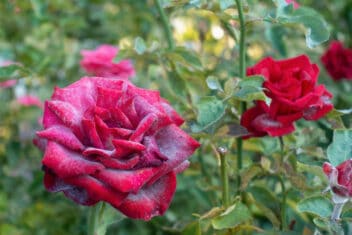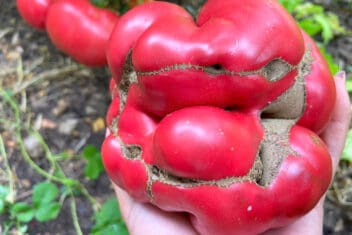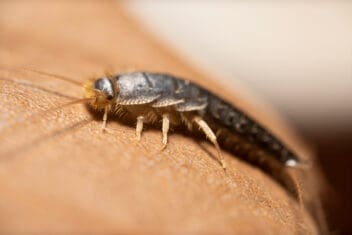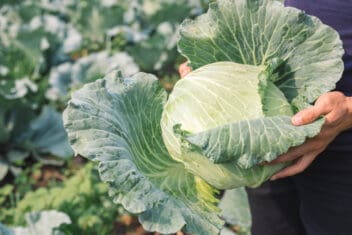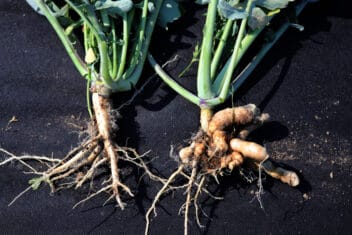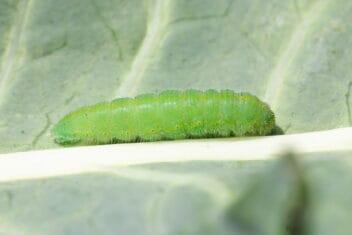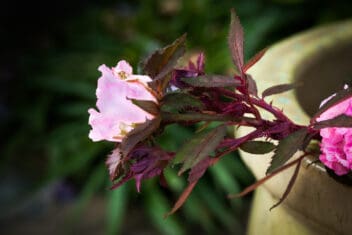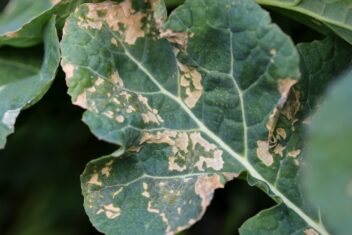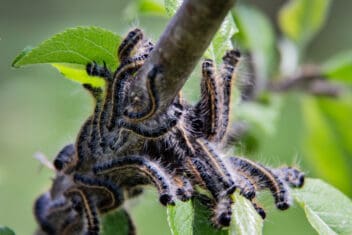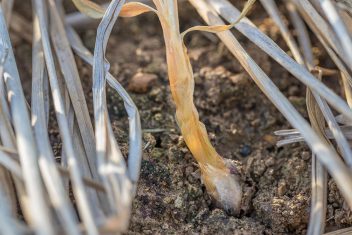Scallions—also known as green or spring onions—are some of the tastiest alliums out there. These onions are immensely versatile, and are ridiculously easy to grow. Furthermore, since they fend off a number of different garden pests, they’re also invaluable companion plants. That doesn’t mean you won’t have any problems growing scallions, however.
Read on to learn about the main issues that plague them so you can take precautionary measures.
Why Are My Scallions Failing? The 15 Most Common Problems:
Although it may seem like there’s a slew of potential problems growing onions, it’s very unlikely that you’ll have to deal with all of these in one go. For instance, I’ve been cultivating scallions for over 20 years, and I’ve only ever had to deal with weeds, slugs, and leaf miners. Ultimately, the issues you might face will depend a great deal on your location, growing zone, etc.
Take preventative measures when possible, rotate your crops regularly, and grow your food plants in different areas. This will ensure that you get at least a small return on the investment of your hard work, time, and money.
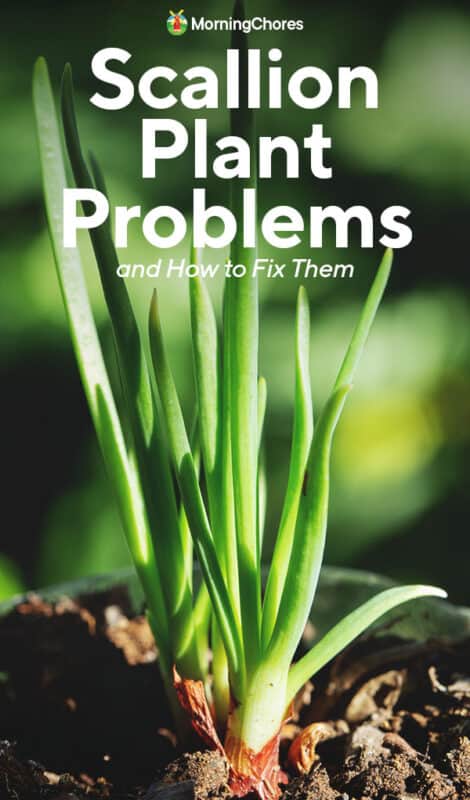
1. Failure to Thrive
Scallions like neutral to slightly acidic soil, and can fail to thrive if the surroundings are too alkaline. You might see stunted growth like spindly stems, or the seedlings might just fall over shortly after germinating. Test the soil to check the pH levels, and work plenty of aged compost into the soil to a good 7″ or 8″ deep.
2. Seedlings Not Growing
Scallions are tiny when they just start growing. As a result, they can easily be crowded out and/or strangled by encroaching weeds. These interlopers will steal nutrients and water away from your alliums, so you’ll need to weed quite ruthlessly around them.
Once the onions are a few inches tall and thickened up, they’ll be more resilient to surviving despite weed presence.
Another way to keep the weed population down and avoid these types of problems is to smother the surface with black tarps or cardboard before sowing your scallions. That should kill off the initial weed seedlings, making it a lot easier for you to maintain the area later on. Mulch can also help suppress weeds.
3. Wilting Leaves
Is your garden soil quite sand-heavy? Or do you live in a dry area? Then your alliums might keel over from thirst if they aren’t watered often enough. When it comes to problems growing scallions, most of the major issues revolve around water. Although members of the onion family are quite easy to grow, they’re fairly heavy drinkers.
As such, you’ll need to work some water-retaining matter into your garden soil before planting. Coconut coir is great for this, as is aged compost, ice hulls, and vermiculite. Water regularly, and test the soil daily with a finger or moisture meter during hot weather to make sure it’s consistently moist. In fact, you might want to consider a drip irrigation system to ensure that their shallow roots are drinking constantly.
Mulch can also help keep moisture in place. Straw, compost, and shredded bark all work nicely.
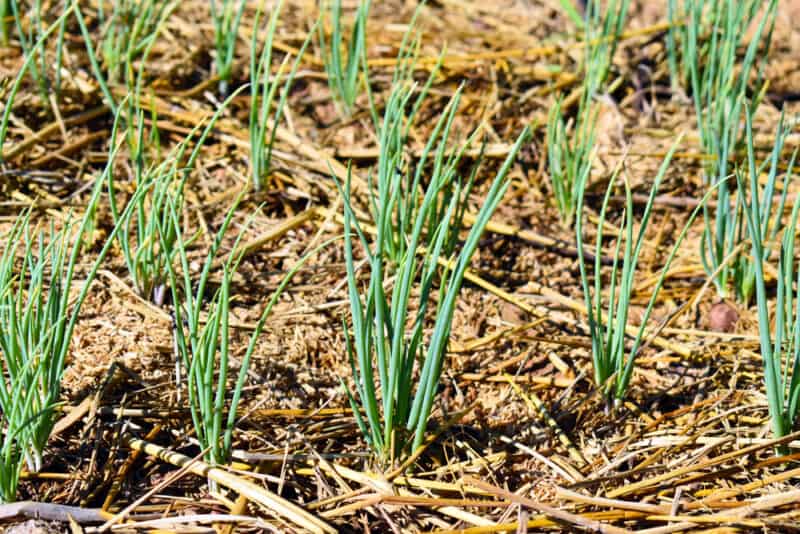
4. Yellow, Brown, Dying Leaves
We’ve discussed fusarium wilt before, so you probably know by now that it’s a soil-borne pathogen (Fusarium spp.) that prevents plants from being able to draw in water. Fusarium basal rot is caused by the same fungal pathogen, only it affects the bulb root base.
The first sign you may notice is that your scallions are turning yellow, rather than being gloriously green. The tips may brown and die off, and if you cut down the stem, you may see brown or black ooze down the middle.
Since this fungus can live indefinitely in soil, the best thing you can do is try to work with it. Rotate your crops well and don’t plant onions in the same spot year after year. Wait three years before planting them in the same spot. Turn the soil over in springtime so the sun can kill off fungal spores, and then treat the area with an organic fungicide.
5. Slimy Patch at the Base of the Stems
This rot is caused by numerous different bacteria and occurs in mature scallion. It’s usually caused by overwatering. The bulbs bloat up and turn sludgy, and smell absolutely horrendous if you poke into them. The first signs of this are slimy softness around the onion’s neck, just above ground level. When you pull it up, the root will have yellow, orange, brown, or gray discolorations, and bits will fall off it.
You can avoid this issue with regular shallow waterings rather than sparse deep soaks. Make sure the soil stays moist, but not waterlogged. If you do discover any rotting onions, remove and burn them immediately. Then treat the area with a copper-based spray.
Bacterial soft rot seems to be more common with transplanted scallion seedlings or cuttings than direct-sown ones. Make sure to buy your seeds from a reputable supply company, and try to choose varieties that are resistant to diseases.
Seed packs will often list the sort of pests and problems that the particular cultivar of scallions is resistant to. It’s worth seeking out ones that are resistant to problems you’ve experienced in the past.
6. Yellow, White, or Red Spots
Although members of the onion family are quite resistant to infection, scallion rust is an exception. It’s a fungal infection (Puccinia spp. and Uromyces spp.) that’s spread via air- or soil-borne detritus and first manifests as white or yellow spots on your scallions. These then turn reddish-brown as they mature and spread.
Your best bet to avoid this issue is to remove any dead, fallen leaves, or other plant matter from your growing beds. Keep the surrounding area free from decaying leaf matter, and keep nearby grass mowed well. If rust appears, pull up and burn any affected plants, and treat the remaining ones with an organic fungicide.
Then rotate your crops and don’t plant alliums there for a few years. You’re going to notice this advice a lot when it comes to avoiding scallion problems, but it’s good advice for all crops, really.
7. Dying Plants With No Visible Cause
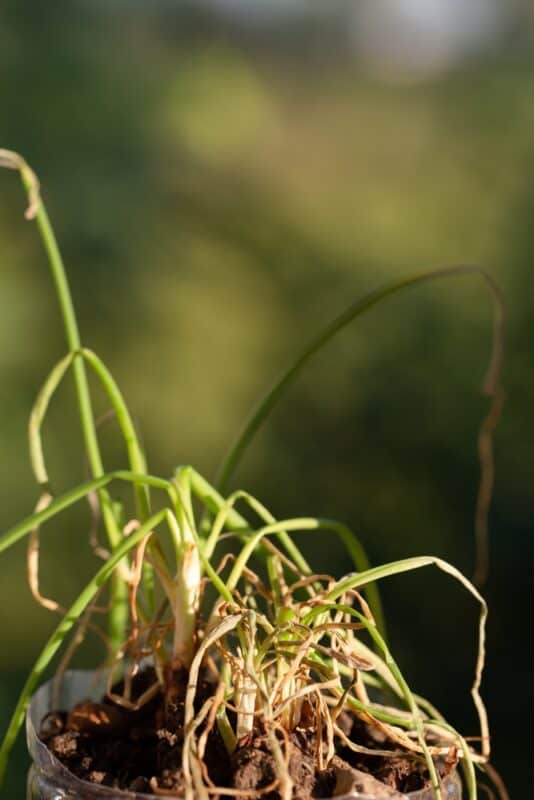
Most alliums are blissfully free from insects and are actually planted to help fend the buggers off. One exception to their repellent qualities is the nasty little onion maggot. Unlike most other larvae that like to gnaw on leafy greens, these maggots burrow their way into scallion bulbs and destroy them from the inside out.
If your scallions aren’t thriving despite optimal circumstances, pull up a couple of plants and check the bulbs. Should you discover maggots in them, pull up the entire lot. Chop off the bulbs and use the greens as best you can, even if that means slicing and freezing them for later. Then turn the soil over thoroughly to expose the maggots and eggs to birds, carnivorous insects, amphibians, and hot sunshine.
The best way to avoid these maggots is with regular crop rotation. In fact, crop rotation is an excellent way to avoid all kinds of scallion growing problems.
8. Stunted Growth and Yellow Stalks
If your scallions are failing to thrive with stunted growth and yellowed stalks, you may be dealing with onion nematodes. These roundworm relatives are tiny but can cause a ridiculous amount of damage. Furthermore, they can move down to a couple of yards deep in the soil, so turning the earth over to a depth of a foot or two really won’t do any good.
A folk method for getting rid of them is to pour copious amounts of boiling water into the soil. Sure, this will kill off a large number of nematodes, but it’ll also kill off everything else. Another option is to use an insecticide that contains nematicide, though there aren’t many organic options for this.
Your best bet for avoiding onion nematodes is to do regular crop rotation. Allow 4–5 years between planting any alliums in an area that has previously been affected by these worms. Turn the soil over in springtime as well as autumn, and plant a crop of painted daisies and French marigolds as a cover/mulch crop occasionally to deter the nematodes.
Wireworms (Agriotes lineatus) are the larvae of click beetles. They live in the soil and feed on all kinds of different plants, including scallions, also causing stunted growth and yellow stalks.
A study by Kwantlen Polytechnic University found that placing rolled oats near your plants attracts the wireworms. Then, you apply a biofungicide containing Metarhizium brunneum to kill the pests. If you can’t find this product in your area, since it is still not well known, use beneficial nematodes instead.
Then, be sure to rotate your crops and to turn over the soil to at least six inches each spring to allow birds to devour any larvae that you unearth.
9. White Trails In Leaves
Although leafy greens like spinach and kale are prone to leaf miners, there’s a species (Phytomyza gymnostoma) that feeds pretty much exclusively on members of the allium (onion) family. If your scallions have white trails all over them, then these are the most likely culprits.
Since leaf miners are the larvae from flying insect species, you can try to fend them off by using floating row covers over your onion crops. If it’s too late, crush the tunnels in the leaves with your fingers or cut off the infested leaves.
10. Silvery Marks On Leaves
Are your scallion greens developing silvery-white markings on them? Insect problems on scallions might be rare, but some can be difficult to control. Fortunately, these insects are fairly easy to deal with: you can blast them off with a water hose, and then spray the onions with neem oil or insecticidal soap.
Additionally, plant yarrow and calendula in the vicinity to encourage carnivorous wasps and other insects that prey on thrips. They should help to keep the populations down. As an added bonus, those parasitic wasps will also prey on leaf miners and other caterpillars.
11. Holes In Leaves or Missing Leaves
You might assume that slugs would avoid onions’ peppery bite, but nope. There are many slug species that will happily devour your scallions. They mostly come out at night, but you might be able to pick them off by hand before the sun rises, or shortly after it sets.
Keep nearby foliage and grass cropped low so they don’t have convenient hiding places. Additionally, be sure to eliminate any detritus (including garden pots and tools) that they might hide beneath. Consider using beer or yeasty sugar water to trap them, or let your ducks loose to hoover them up.
Just please don’t use poisons to get rid of them, as that will poison slug predators like hedgehogs, raccoons, and songbirds as well.
12. White Spots On Leaves
Downy mildew (Peronospora destructor) is one of those problems that seems to attack almost every plant, including scallions. It shows up as white or creamy yellow spots on the leaves.
To learn more about how to identify and stop this common disease, head to our comprehensive guide for some tips.
13. Tips Dying, Roots Turning Pink or Yellow
Pink root is caused by the fungus Phoma terrestris. As the name indicates, its most striking symptom is that it turns the roots of alliums a fetching shade of pink. It can live in the soil and be spread by tools, and though it won’t usually kill your plants, it renders the bulb unusable. You can still, however, use the leaves.
Your only option is prevention, which includes rotating your crops, cleaning your tools in between use, and solarizing soil when it is fallow.
14. Onions Form Flowers
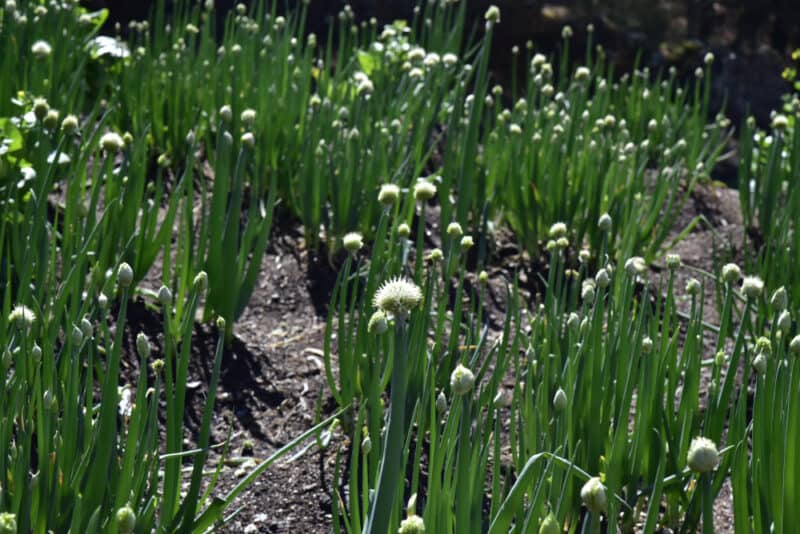
Bolting is the name for when a plant sends up flowers in order to complete its growing cycle of life. While there’s nothing wrong with bolting, we want to avoid it because it means that you won’t be getting any more of those lovely, pungent scallions leaves, since the plant will die after it is done flowering.
Bolting happens for a number of reasons, all stress-related. Too much heat or cold, too little or too much water, or no water followed by a large amount of it can all cause bolting.
Beyond regulating the amount of water you provide your scallions, the best thing to do if your plant starts sending up flowers is to snip them off at the base.
15. White Streaks on Leaves, Blisters on Bulb of Seedligs
Onion smut only attacks seedlings, but those that contract the disease will never grow up to be big, strong, healthy plants. It spreads through soil, dirty tools, and even contaminated clothing, so good garden hygiene practices are super essential.
It’s caused by the fungi Urocystis colchici and U. cepulae, and can be avoided by starting seedlings indoors or drenching soil in a fungicide before planting.
